Look at these amazing pottery studio setups
Are you ready to dive into the world of pottery? If so, then you’re in for a treat! Pottery is not just about molding clay; it’s an experience that combines creativity, functionality, and a touch of personal flair. Imagine stepping into a pottery studio that not only inspires you but also enhances your creative flow. The right setup can transform your artistic journey from mundane to magical! In this article, we will explore various pottery studio setups that are not only aesthetically pleasing but also practical, ensuring you have the perfect environment to unleash your creativity.
When it comes to designing your pottery studio, the layout is everything. Think of it as the stage where your artistic performance unfolds. A well-thought-out studio layout can significantly impact your pottery experience, allowing you to move freely and work efficiently. Whether you’re a beginner just starting or a seasoned potter with years of experience, the right configuration can make all the difference. Picture a space where everything you need is at your fingertips, where inspiration flows as easily as the clay through your hands. Wouldn’t that be incredible?
Let’s talk about styles! Pottery studios can range from cozy nooks in a corner of your home to expansive spaces filled with natural light. Some setups might feature traditional wooden tables, while others might embrace a more modern industrial look with metal and glass. The choice is yours! You might want to consider the following elements when planning your studio:
- Natural Light: A space filled with sunlight can uplift your mood and spark creativity.
- Ergonomics: Ensure your workspace is comfortable to prevent strain during long hours of crafting.
- Accessibility: Keep your tools and materials within easy reach to maintain a smooth workflow.
In addition to layout and style, let’s not overlook the importance of essential tools. Every pottery studio needs the right equipment to bring your artistic vision to life. From shaping to glazing and firing, having the right tools can make your pottery projects not just possible, but enjoyable. Imagine having a well-stocked toolbox filled with all the goodies you need to create your masterpieces!
Now, as we explore these amazing studio setups, keep in mind that the ultimate goal is to create a space that resonates with your personal style and enhances your pottery practice. Whether you prefer a minimalist approach or a more eclectic vibe, the possibilities are endless. So, grab your clay and let’s get inspired by these incredible pottery studio setups!
Q: What should I consider when designing my pottery studio?
A: Consider factors like layout, natural light, accessibility, and your personal style. Make sure the space is comfortable and inspires creativity.
Q: What are the essential tools I need for pottery?
A: Basic tools include rolling pins, wire cutters, potter’s wheel, and glazing supplies. Tailor your toolkit to your specific pottery methods.
Q: How can I organize my pottery studio effectively?
A: Use shelves, bins, and tool organizers. Keep frequently used items within easy reach to streamline your creative process.
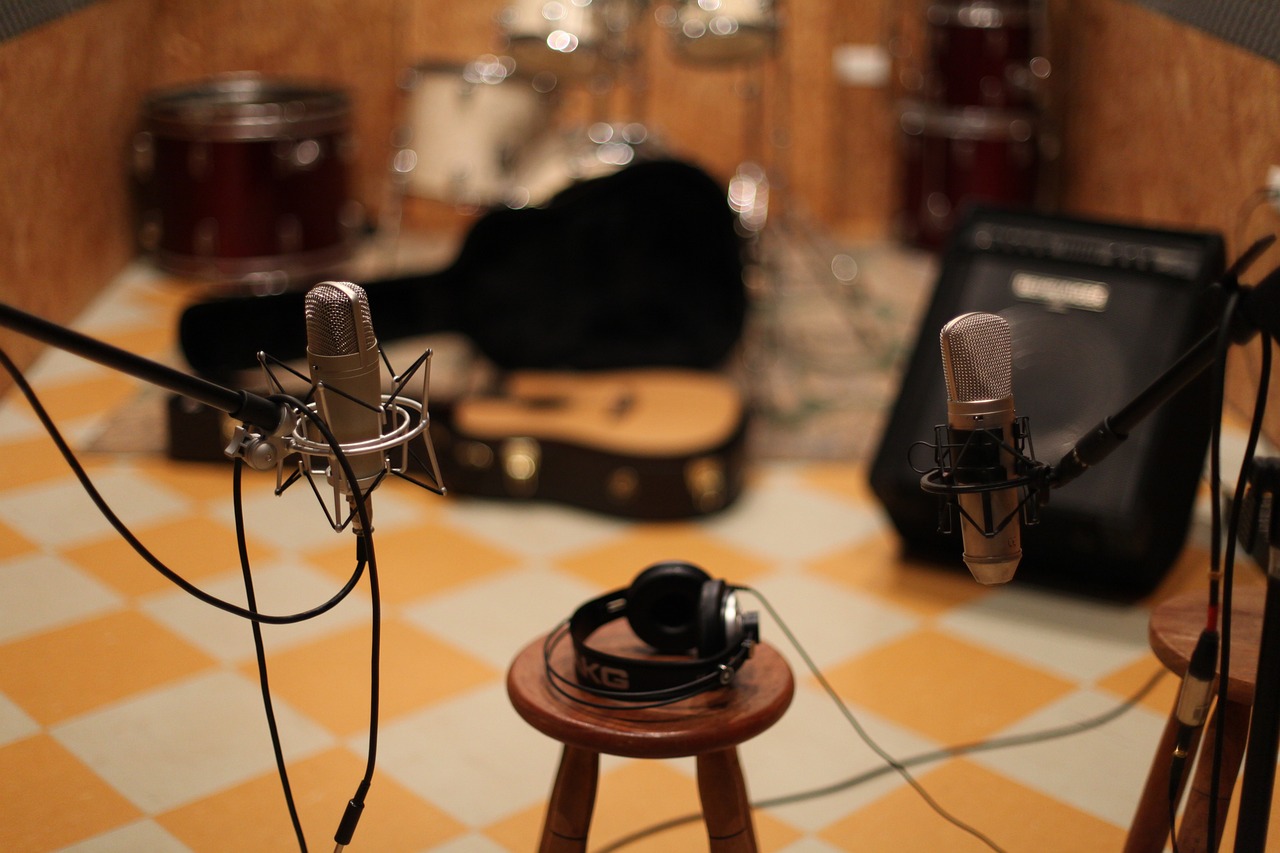
Creative Layouts
A well-thought-out layout can significantly impact your pottery experience. Imagine stepping into a space where every tool is within reach, where inspiration flows as freely as the clay on your wheel. The right configuration not only enhances functionality but also fosters creativity. Whether you're a beginner just getting your hands dirty or a seasoned potter with years of experience, the layout of your studio can make all the difference.
When designing your pottery studio, consider different configurations that maximize both space and efficiency. For example, a U-shaped layout allows for easy movement between workstations, while a linear layout keeps everything streamlined. You might also want to explore the island layout, which provides a central workspace surrounded by tools and materials, making it easy to collaborate or share ideas with fellow artists.
Here are a few creative layout ideas to inspire your own studio design:
- Open Concept: This layout encourages collaboration and conversation, ideal for group classes or workshops.
- Zoned Layout: Divide your studio into zones for different activities, such as handbuilding, wheel throwing, and glazing. This helps maintain focus and organization.
- Multi-Functional Spaces: Incorporate furniture that serves multiple purposes, like a table that can be used for both work and display.
Another aspect to consider is the ergonomics of your workspace. Ensure that your tables and equipment are at comfortable heights to prevent strain during long hours of crafting. The placement of your potter's wheel should allow for easy access to tools and materials, creating a seamless workflow. Remember, a well-designed space is not just about aesthetics; it's about making your creative process as enjoyable and efficient as possible.
Finally, don't forget to include natural elements in your studio layout. Large windows that let in ample sunlight can boost your mood and creativity. Incorporating plants not only adds a touch of nature but also helps purify the air. By blending functionality with a touch of personal style, you can create a pottery studio that not only inspires you but also reflects your unique artistic vision.
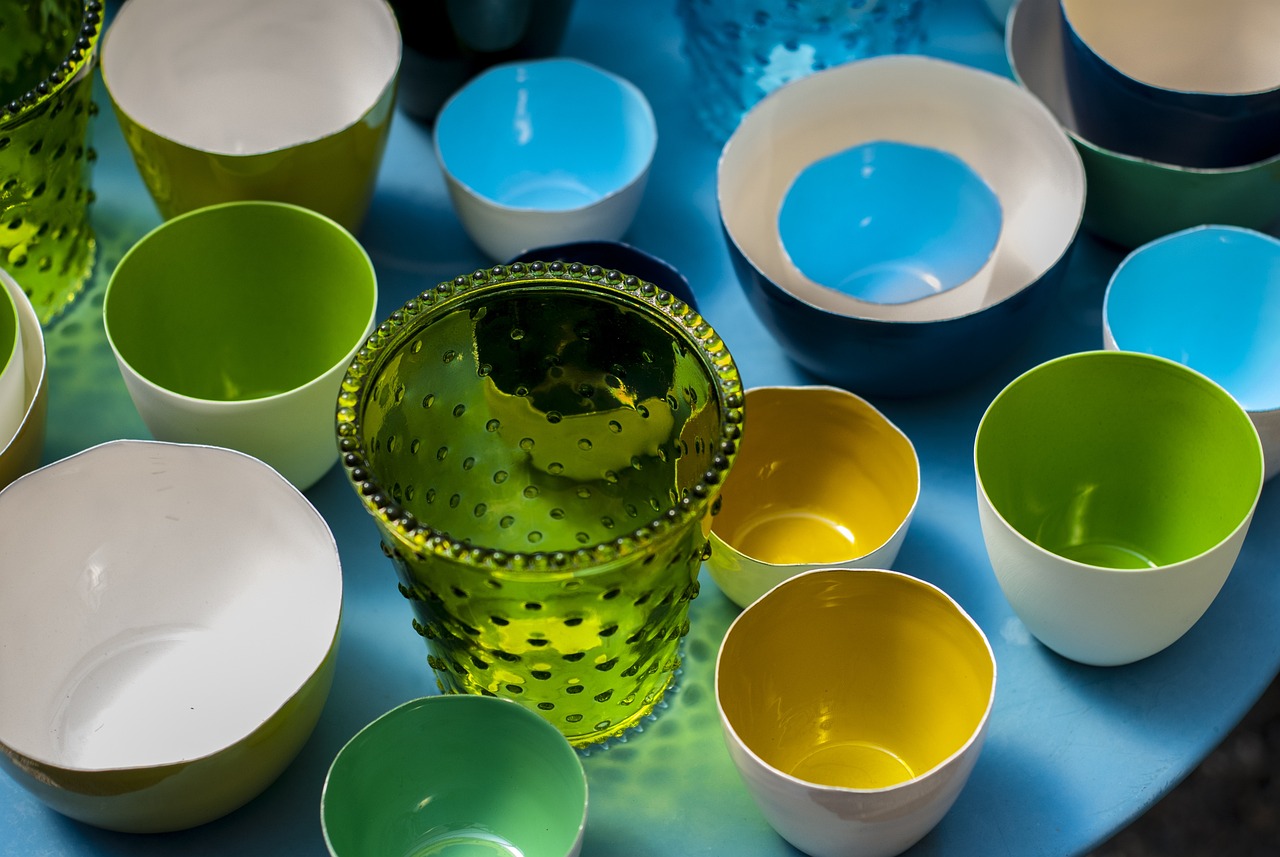
Essential Tools
Every pottery studio needs the right tools to transform your creative ideas into tangible works of art. Whether you're a beginner just starting your journey or a seasoned potter looking to refine your craft, having the right equipment is crucial. Imagine trying to bake a cake without the proper utensils; it would be a messy affair! Similarly, in pottery, the right tools can make all the difference in achieving that perfect piece. From shaping to glazing and firing, each step requires specific tools that cater to your artistic vision.
To help you navigate through the essentials, let’s break down the must-have equipment you should consider for your pottery studio. This includes everything from handbuilding tools to wheel-throwing instruments, all of which play a pivotal role in your creative process. Investing in quality tools not only enhances your craftsmanship but also makes the entire experience more enjoyable. Here’s a closer look at the essential tools you should have:
- Handbuilding Tools: These are crucial if you prefer to mold and shape your clay by hand. They allow for greater creativity and flexibility in your designs.
- Wheel-Throwing Tools: If you love the feel of the potter's wheel, you’ll need specific tools that help you master this technique and create stunning pieces.
- Glazing Tools: Once your pieces are shaped, glazing tools are essential for applying color and finishing touches that bring your pottery to life.
- Firing Equipment: Finally, the right kiln is necessary to fire your creations, ensuring they are durable and ready for use.
Let’s dive deeper into some of these categories to better understand what you might need:
Handbuilding techniques require specific tools that can enhance your craftsmanship. Tools like rolling pins, wire cutters, and rib tools are fundamental in this process. A rolling pin is essential for creating uniform slabs of clay, while wire cutters help in slicing clay and removing pieces from the wheel. These tools not only save time but also improve the quality of your work. For instance, a well-chosen rolling pin can make a significant difference in the consistency of your slabs, which is crucial for creating intricate designs.
When selecting a rolling pin, consider the material and size. Wooden pins are popular for their durability, while acrylic pins can be easier to clean. The right rolling pin will allow you to achieve a smooth, even thickness across your clay, which is vital for uniformity in your projects. Techniques such as using guides on either side of the clay can help maintain consistent thickness, making your work much more professional.
Wire cutters are indispensable for any potter. They allow you to cut clay easily and cleanly, whether you're removing a piece from the wheel or slicing through a block of clay. There are various types available, including those with a single wire and those with multiple wires for different cutting needs. Understanding how to use these tools effectively can save you a lot of frustration and help you work more efficiently.
If you prefer to throw your pottery on the wheel, there are specific tools that can enhance your experience. A good set of trimming tools, for example, will allow you to refine your pieces after they have been thrown. Additionally, having a sponge, wooden rib, and a needle tool at hand can greatly facilitate the process. These tools help you shape, smooth, and detail your pottery, ensuring each piece is crafted to perfection.
In conclusion, having the right tools in your pottery studio is essential for nurturing your creative spirit and producing beautiful works of art. Whether you’re handbuilding or wheel-throwing, the right equipment can elevate your pottery-making experience to new heights. Remember, investing in quality tools not only enhances your craftsmanship but also makes your creative journey much more enjoyable!
Q: What are the most essential tools for a beginner potter?
A: Beginners should focus on handbuilding tools like rolling pins, wire cutters, and basic wheel-throwing tools. A good starter set should also include trimming tools and a sponge.
Q: How do I maintain my pottery tools?
A: Clean your tools after each use to prevent clay buildup. Store them in a dry place to avoid rusting, especially for metal tools.
Q: Can I use regular kitchen tools for pottery?
A: While some kitchen tools can be repurposed, it's best to use tools specifically designed for pottery to ensure quality and effectiveness.

Handbuilding Tools
When it comes to handbuilding pottery, having the right tools can make all the difference in your creative journey. Unlike wheel-throwing, handbuilding allows you to mold and shape clay using your hands and simple tools, giving you the freedom to express your artistic vision without the constraints of a potter's wheel. So, what are the essential handbuilding tools you should have in your pottery studio?
First and foremost, let's talk about the basic hand tools that every potter should have. These include a variety of items designed to help you manipulate clay effectively. For instance, a pin tool is great for adding details and textures, while a scoring tool helps you join pieces of clay together seamlessly. Additionally, a sponge is invaluable for smoothing out surfaces and keeping your hands clean and hydrated while you work.
Another must-have is a rolling pin. It’s not just for baking! In pottery, rolling pins are essential for creating uniform slabs of clay. When choosing a rolling pin, consider its size and material. A wooden rolling pin is traditional, but a marble one can help keep your clay cool, which is particularly useful in warmer environments. To effectively use a rolling pin, you can place your clay between two wooden slats to ensure an even thickness. This technique can elevate your handbuilding projects by providing a solid base for your creations.
Don't overlook the importance of wire cutters. These handy tools are essential for slicing through clay and removing pieces from the wheel or your work surface. They come in various forms, from simple wire loops to more complex cutting tools. Knowing how to use them effectively can save you time and frustration. For instance, when cutting a block of clay, make sure to pull the wire taut to get a clean cut, which will help in maintaining the integrity of your piece.
Now, let’s not forget about texture! Adding texture to your pottery can bring your pieces to life. Tools like texture mats or stamps allow you to imprint designs onto your clay, making your work truly unique. You can even create your own textures by using found objects around your house, such as leaves or fabric, to press into the clay. The possibilities are endless!
In summary, equipping your pottery studio with the right handbuilding tools is crucial for unleashing your creativity. From rolling pins and wire cutters to texture tools, each item plays a vital role in enhancing your craftsmanship. Remember, the journey of handbuilding pottery is as much about the tools as it is about your personal expression. So, gather your tools, roll up your sleeves, and let your creativity flow!
- What are the best materials for handbuilding tools? - Most handbuilding tools are made from wood, metal, or plastic. Choose materials that feel comfortable in your hands and suit your working style.
- Can I make my own handbuilding tools? - Absolutely! Many potters create their own tools using everyday items. Get creative and see what works for you!
- How do I clean my handbuilding tools? - It's essential to clean your tools after each use to prevent clay from drying on them. A simple wash with warm soapy water usually does the trick.
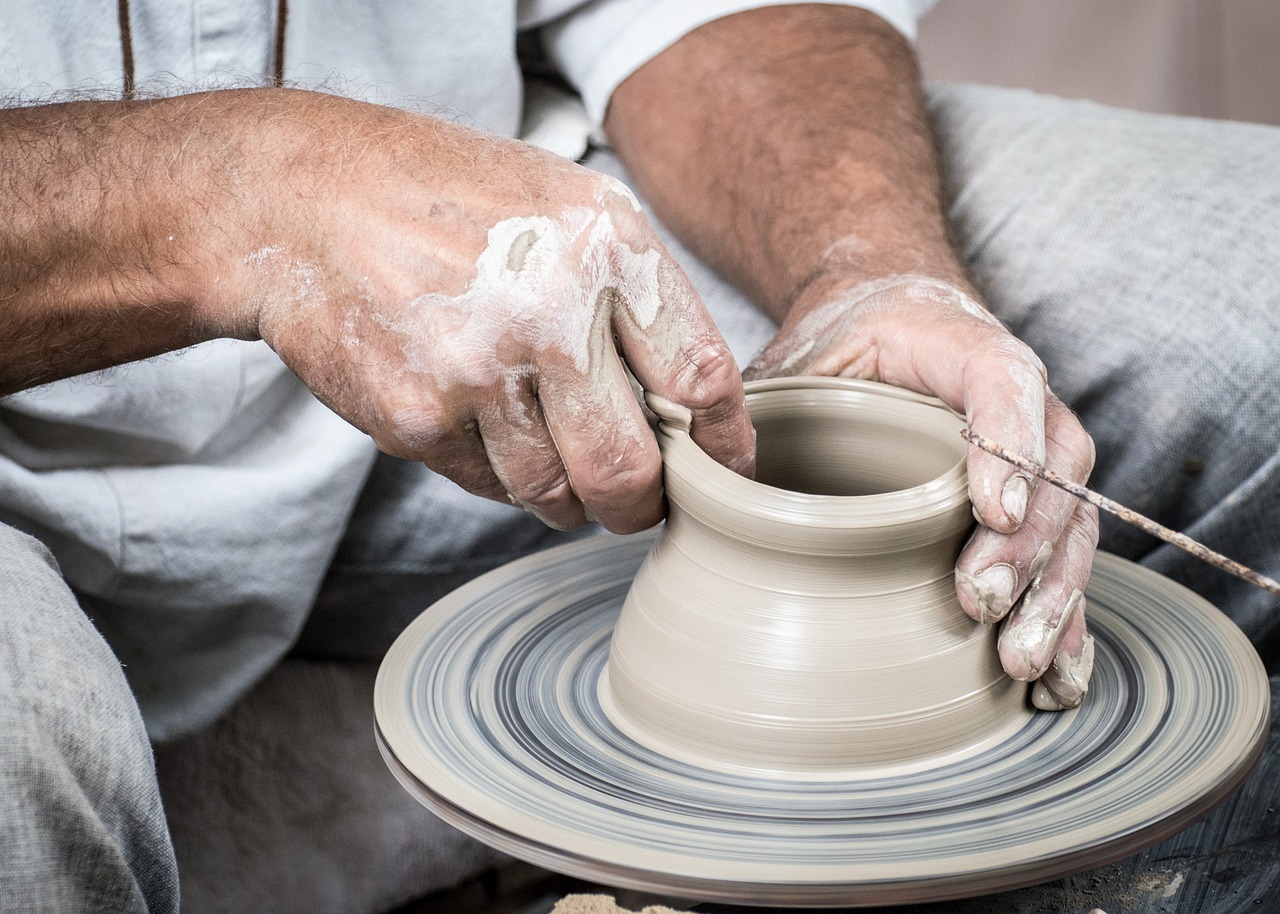
Rolling Pins
When it comes to pottery, the rolling pin is more than just a simple kitchen tool; it's an essential companion in your creative journey. Think of it as your trusty sidekick, helping you transform raw clay into beautiful, uniform slabs that can be shaped into stunning pieces. But not all rolling pins are created equal! Choosing the right one can significantly impact your pottery-making experience.
There are several types of rolling pins, each designed for specific tasks. For instance, a traditional wooden rolling pin is great for general use, while a marble rolling pin can help keep your clay cool, which is crucial for certain techniques. Here’s a quick breakdown:
| Type of Rolling Pin | Best For |
|---|---|
| Wooden Rolling Pin | General use, versatile |
| Marble Rolling Pin | Keeping clay cool, fine details |
| Adjustable Rolling Pin | Creating uniform thickness |
When selecting your rolling pin, consider the size and weight that feels comfortable in your hands. A heavier pin can help you apply more pressure, making it easier to roll out thicker slabs, while a lighter pin might be better for delicate work. Additionally, the material can affect how the clay interacts with the pin. For example, wooden pins can absorb moisture from the clay, while non-stick materials prevent sticking, allowing for smoother rolling.
To get the most out of your rolling pin, here are a few tips:
- Always dust your work surface and rolling pin with cornstarch or flour to prevent sticking.
- Use even pressure when rolling to ensure a uniform thickness across the slab.
- Experiment with different techniques, like rolling from the center outwards, to achieve the desired shape.
Incorporating a rolling pin into your pottery toolkit not only enhances your craftsmanship but also adds an element of fun to the process. So, whether you're creating a simple tile or an intricate bowl, remember that the right rolling pin can be the difference between a good piece and a great piece of art. Happy rolling!
Q: What type of rolling pin is best for beginners?
A: A wooden rolling pin is often recommended for beginners due to its versatility and ease of use.
Q: How do I clean my rolling pin?
A: Simply wipe it down with a damp cloth after use. Avoid soaking it in water to prevent warping.
Q: Can I use a regular kitchen rolling pin for pottery?
A: Yes, but it’s best to use one that you dedicate to pottery to avoid contamination with food particles.
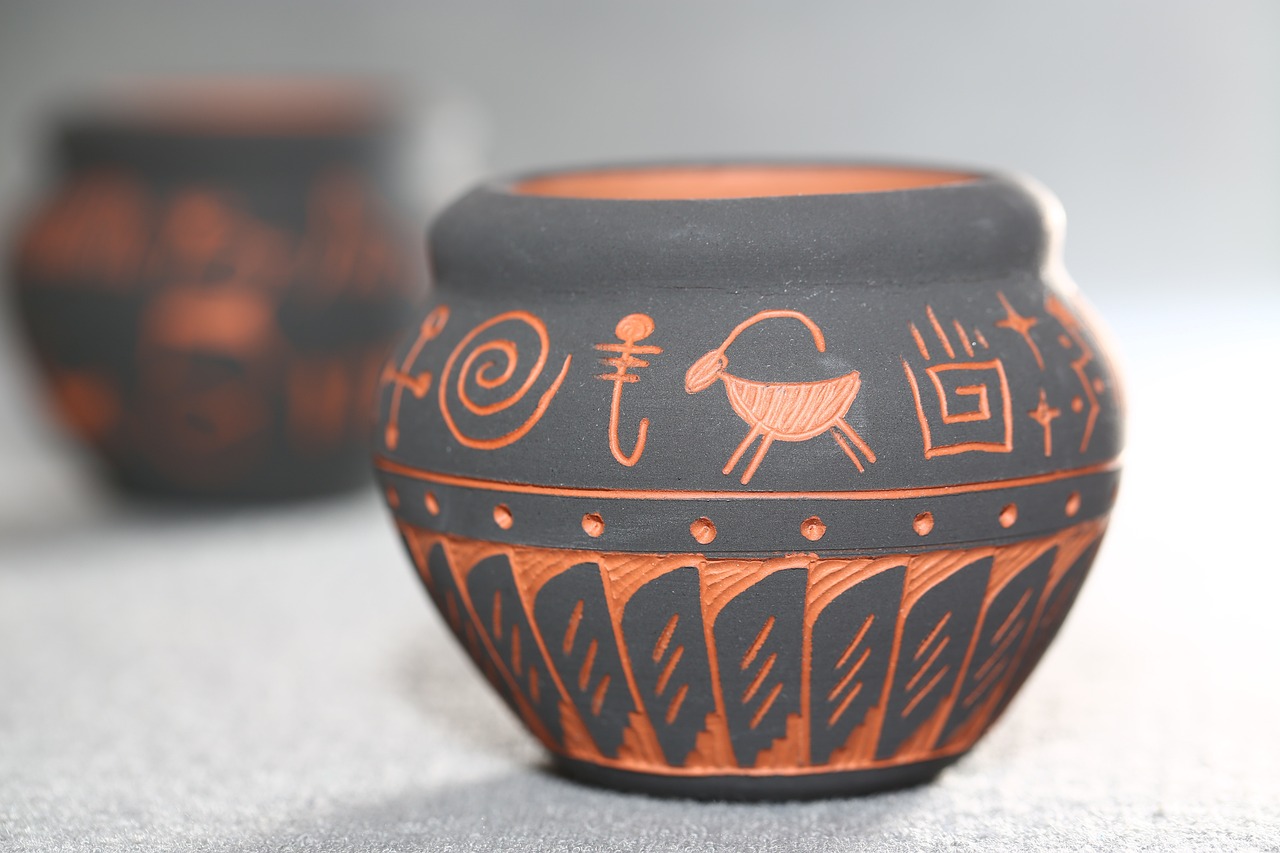
Wire Cutters
Wire cutters are absolutely essential tools in any pottery studio, especially for those who are serious about their craft. These handy devices are designed to make the process of slicing through clay not only easier but also more precise. Imagine trying to cut a perfectly shaped piece of clay with a dull knife; it just doesn't work! Wire cutters allow you to achieve clean, smooth edges, which is crucial for both aesthetic appeal and functionality in your pottery projects.
When it comes to choosing wire cutters, there are a few different types available on the market, each serving its unique purpose. Here’s a quick breakdown:
| Type | Description | Best For |
|---|---|---|
| Standard Wire Cutters | Basic wire cutters that can slice through clay with ease. | General cutting tasks. |
| Heavy-Duty Wire Cutters | Sturdier versions designed for thicker clay and larger projects. | Large-scale pottery work. |
| Loop Wire Cutters | Cutters with a loop handle for better grip and control. | Precision cutting and intricate designs. |
Using wire cutters effectively involves a few simple techniques. First, ensure that the wire is taut and properly positioned before making your cut. This will help you achieve a clean slice without distorting the shape of your clay. Additionally, practice makes perfect! The more you use your wire cutters, the better you’ll become at judging the right amount of pressure to apply, which is crucial for achieving the desired results.
Another important tip is to keep your wire cutters clean and well-maintained. After each use, wipe down the wire to remove any clay residue, as this can affect the performance of the cutter. Storing them in a dedicated tool drawer or hanging them on a pegboard can also help prolong their lifespan and keep your workspace organized.
In conclusion, wire cutters are not just tools; they are your best friends in the world of pottery. With the right type of wire cutters and a bit of practice, you'll be able to elevate your pottery projects to new heights, achieving the precision and finesse that every potter strives for. So, if you haven’t already, it’s time to invest in a good pair of wire cutters and see the difference they can make in your creative process!
- What is the best type of wire cutter for beginners? Standard wire cutters are usually the best choice for beginners as they are versatile and easy to use.
- How do I maintain my wire cutters? Clean them after each use and store them in a dry place to prevent rusting.
- Can I use regular scissors instead of wire cutters? While you can use scissors for soft clay, wire cutters are specifically designed for clean cuts and are recommended for best results.
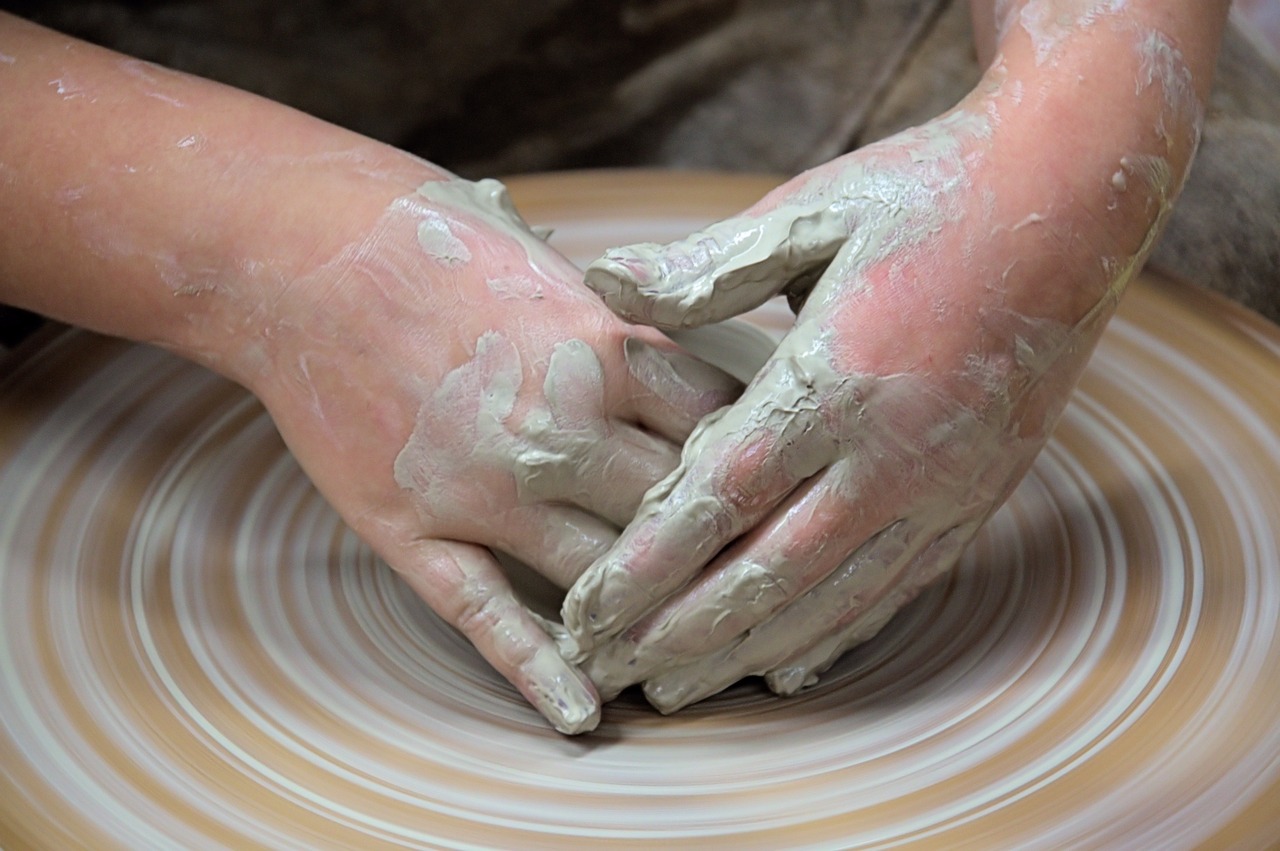
Wheel-Throwing Tools
When it comes to wheel-throwing, having the right tools can make all the difference in your pottery journey. Imagine sitting at your potter's wheel, clay spinning effortlessly beneath your hands, and with the right tools, you can transform that lump of clay into a stunning masterpiece. But what exactly do you need to get started? Let’s dive into the essential wheel-throwing tools that every potter should have in their studio.
First and foremost, the potter's wheel itself is the heart of wheel-throwing. There are various types of wheels available, from electric to kick wheels. Electric wheels are often favored for their ease of use and speed, allowing you to focus on your technique rather than the physical effort of kicking a wheel. On the other hand, kick wheels offer a unique experience that many potters find rewarding. Regardless of which type you choose, ensure it has a sturdy base and is easy to control, as this will enhance your throwing experience.
Next up, we have tools for shaping and trimming. These include trimming tools, rib tools, and wooden modeling tools. Trimming tools are essential for refining the shape of your pot after it’s been thrown. A good trimming tool should have a sharp edge to carve away excess clay smoothly. Rib tools, often made from wood or rubber, help create the desired curves and smooth surfaces on your pottery. They’re like the artist’s brush, giving you the ability to shape your work with finesse. Wooden modeling tools are great for adding details and textures, allowing your creativity to shine through.
Don't forget about sponges! These little wonders are crucial for keeping your clay moist and workable. A sponge can be used to smooth out rough edges or to add moisture to clay that’s starting to dry out. They’re also handy for cleaning your hands and the wheel between throws, which helps maintain a tidy workspace. Trust me, a clean studio is a happy studio!
Another indispensable tool is the wire cutter. This tool is essential for slicing clay and removing your creations from the wheel. When your piece is finished, you’ll want to use a wire cutter to gently separate it from the wheel without damaging it. It's a simple tool, but it saves you from potential heartbreak when your beautiful creation gets stuck!
Finally, let’s talk about bat systems. These are flat discs that sit on top of your wheel head, allowing you to throw pots without having to remove them from the wheel each time. Bats make it easier to transport your pieces to the drying area without risking damage. They come in various materials, including plastic and wood, so choose one that suits your style and needs.
In summary, the right wheel-throwing tools can elevate your pottery game to new heights. Whether you’re a beginner just starting out or a seasoned potter looking to refine your skills, investing in quality tools is key. Remember, it's not just about the tools themselves, but how you use them to express your creativity and bring your artistic vision to life.
Q: What is the best type of potter's wheel for beginners?
A: Electric potter's wheels are generally recommended for beginners due to their ease of use and consistent speed control.
Q: How do I care for my wheel-throwing tools?
A: Regularly clean your tools after each use, and store them in a dry place to prevent damage. It's also a good idea to check for wear and tear periodically.
Q: Can I use regular kitchen sponges for pottery?
A: While you can use kitchen sponges, it's best to use sponges specifically designed for pottery as they are more durable and better suited for working with clay.
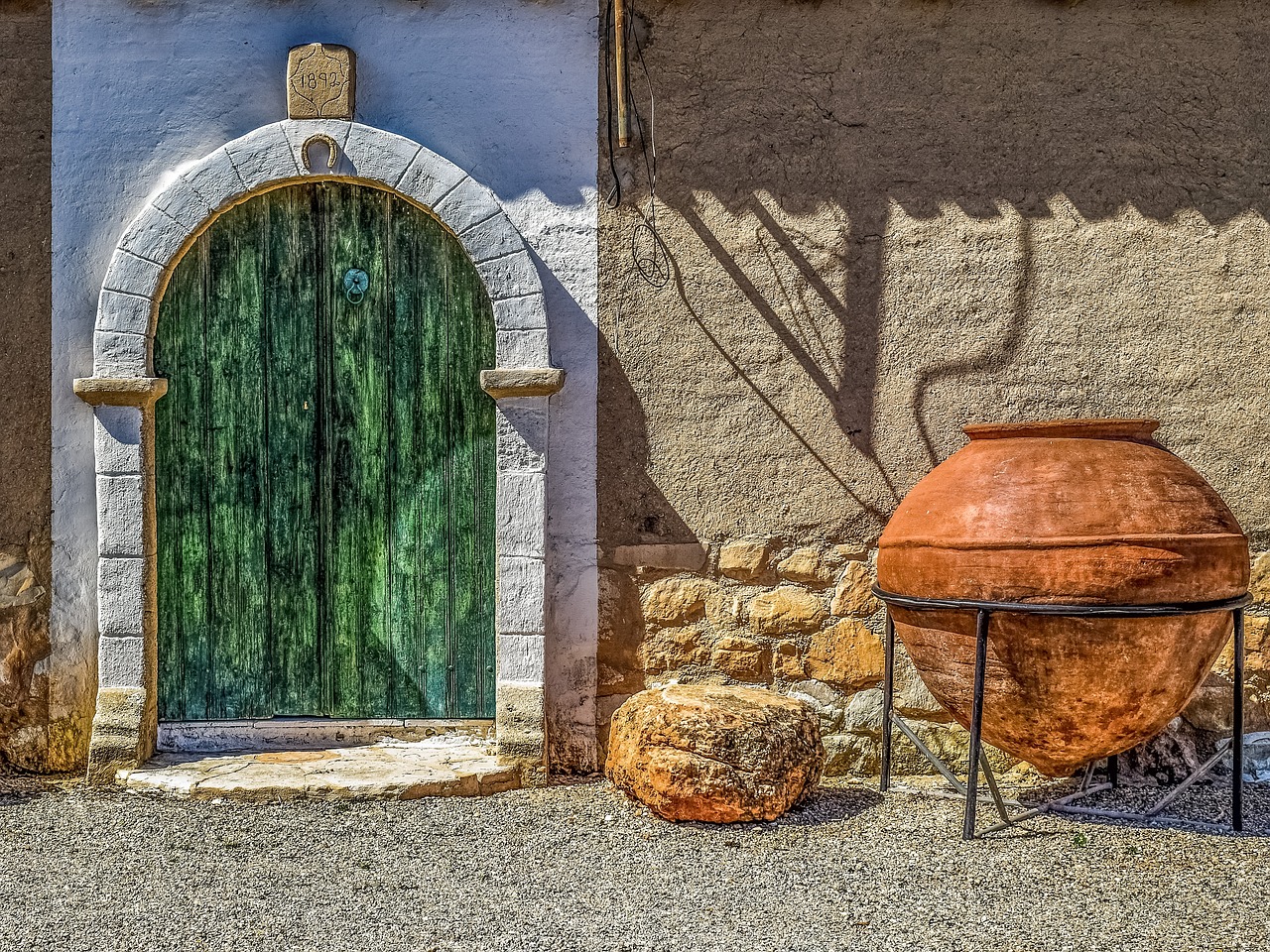
Inspiring Decor
When it comes to pottery studios, the decor is not just about aesthetics; it plays a crucial role in fueling your imagination and creativity. A well-decorated studio can transform your workspace into an inspiring haven, where every corner sparks an idea and every color resonates with your artistic vision. Think of your studio as a blank canvas, waiting for your personal touch. Whether you prefer a minimalist vibe or a bohemian explosion of colors, the decor you choose can significantly influence your pottery-making experience.
One way to create an inspiring atmosphere is through thoughtful color schemes. Colors can evoke emotions, set the mood, and even influence your productivity. For instance, soft blues and greens can create a serene environment, perfect for focusing on intricate details, while vibrant reds and yellows can energize you, making them ideal for creative bursts. Imagine walking into your studio and feeling instantly uplifted by the colors surrounding you. It's like stepping into a world where creativity flows freely!
Additionally, consider incorporating artistic displays of your finished pottery pieces. Not only do they showcase your hard work, but they also serve as a constant reminder of your artistic journey. You can create a dedicated display area using shelves, wall-mounted racks, or even a rotating display stand. This not only beautifies your studio but also inspires you every time you walk past your creations. Think about how it feels to see your own work proudly displayed, encouraging you to push your boundaries further.
Another effective decor idea is to integrate natural elements into your studio. Plants can breathe life into your space, providing a refreshing contrast to the earthy tones of clay. Consider adding some easy-to-care-for plants, such as succulents or pothos, that can thrive in your studio environment. Not only do they enhance the decor, but they also improve air quality and create a calming atmosphere. It's like bringing a piece of nature into your creative sanctuary!
Finally, don’t forget the power of artistic lighting. Proper lighting can dramatically change the vibe of your studio. Natural light is ideal, so if you can, position your workspace near a window. However, if natural light isn’t an option, choose warm-toned lights that create a cozy environment. You might even consider adding some unique lamps or fairy lights to give your studio a whimsical touch, making it feel like a magical space where creativity knows no bounds.
In summary, the decor of your pottery studio is an essential aspect of your creative process. By carefully selecting colors, displaying your work, incorporating natural elements, and ensuring proper lighting, you can create an inspiring atmosphere that not only enhances your creativity but also makes your pottery sessions more enjoyable. So, take a moment to reflect on how you can transform your workspace into a true reflection of your artistic spirit!
- What colors are best for a pottery studio? Soft blues and greens promote calmness, while vibrant colors can energize your creativity.
- How can I display my pottery effectively? Use shelves, racks, or rotating stands to showcase your work and inspire yourself and visitors.
- What types of plants are suitable for a pottery studio? Succulents and pothos are great options as they require minimal care and thrive indoors.
- How important is lighting in a pottery studio? Lighting is crucial; natural light is best, but warm-toned artificial lights can create a cozy atmosphere.
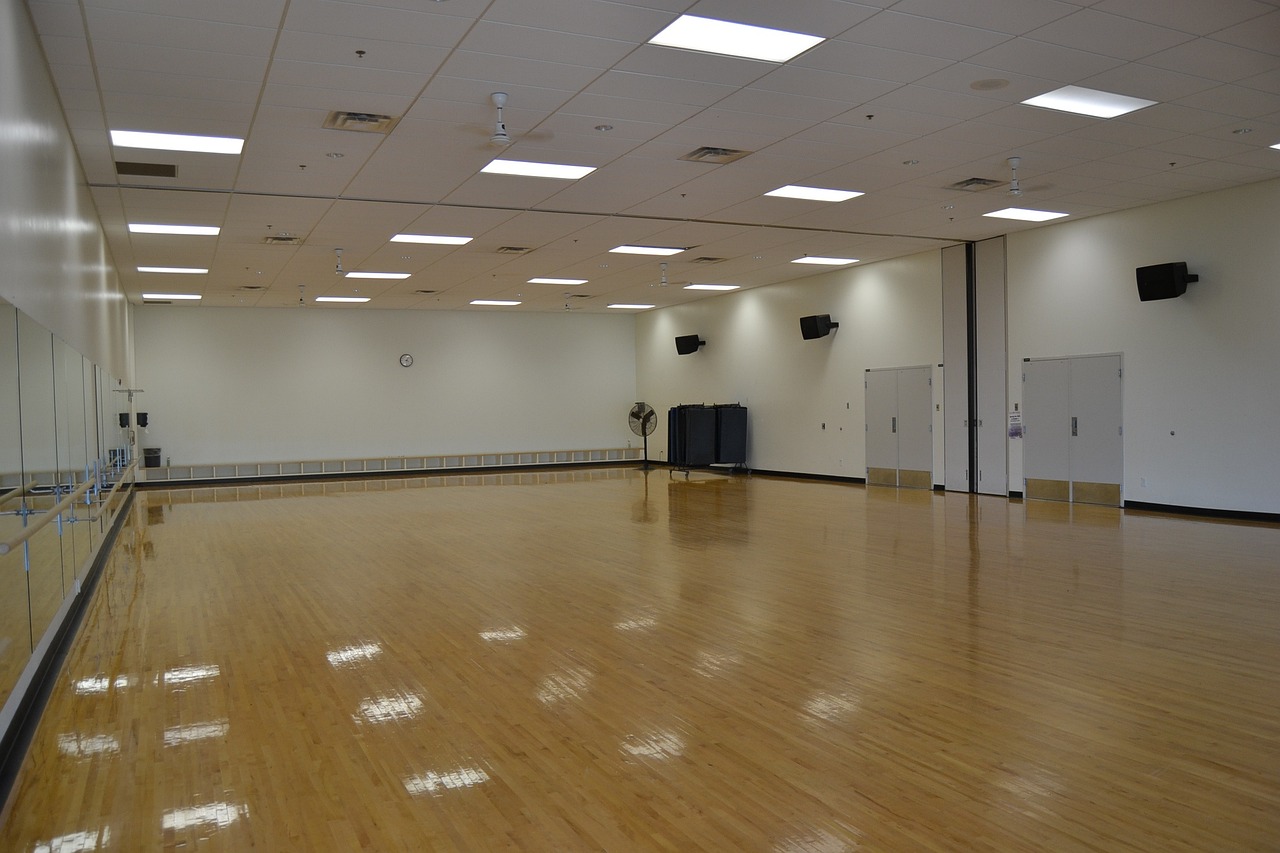
Color Schemes
Choosing the right color scheme for your pottery studio is like picking the perfect outfit for a big date; it sets the tone and can make all the difference in how you feel and create. Colors have a profound impact on our emotions and energy levels, which can either ignite your creativity or leave you feeling uninspired. When designing your studio, think about the atmosphere you want to foster. Do you crave a calming sanctuary where you can focus on your craft? Or perhaps you desire a vibrant space that fuels your imagination? Whatever your preference, the right colors can help you achieve that vision.
For instance, cool colors like blues and greens can create a serene environment, perfect for those long hours of shaping clay. These hues are known for promoting relaxation and concentration. On the flip side, warm colors like reds and oranges tend to energize a space, sparking enthusiasm and creativity. Imagine walking into a studio painted in a warm terracotta or a sunny yellow—can you feel the inspiration bubbling up already?
Another aspect to consider is the balance of colors. A well-balanced color palette can enhance the overall aesthetic of your studio. You might want to incorporate a mix of neutrals, like whites and grays, to ground the space while adding pops of color through decor or your pottery pieces. This way, your studio remains a canvas in itself, showcasing your creations without overwhelming the senses. A good rule of thumb is the 60-30-10 rule: 60% of your space should be a dominant color, 30% a secondary color, and 10% an accent color. This can help you create a harmonious environment that feels both inviting and inspiring.
Here’s a quick table summarizing some popular color schemes and their effects:
| Color Scheme | Effect |
|---|---|
| Cool Colors (Blues, Greens) | Calming, Focus-enhancing |
| Warm Colors (Reds, Oranges) | Invigorating, Creativity-boosting |
| Neutrals (Whites, Grays) | Grounding, Versatile |
| Monochromatic | Elegant, Cohesive |
| Complementary | Dynamic, Eye-catching |
Ultimately, the best color scheme for your pottery studio is one that resonates with you personally. Don’t hesitate to experiment with different shades and combinations until you find the perfect mix that stirs your creativity. Remember, your studio is a reflection of your artistic spirit, so let it shine through your color choices!
- What is the best color for a pottery studio? The best color depends on your personal preference. Cool colors promote focus, while warm colors inspire creativity.
- How can I incorporate color into my studio? You can paint the walls, use colorful decor, or display vibrant pottery pieces to enhance the color scheme.
- Are there any color combinations to avoid? While it ultimately comes down to personal taste, overly bright or clashing colors can create a chaotic environment that may hinder creativity.

Artistic Displays
Creating a pottery studio is not just about functionality; it’s also about inspiration. The way you display your finished pieces can transform your workspace into a gallery that sparks creativity and invites admiration. Imagine walking into a studio where every corner tells a story, where your creations are not just tools of expression but also art pieces that inspire you every day. So, how can you achieve this artistic display in your pottery studio?
First off, consider the layout of your display area. You want to create a space that is not only visually appealing but also functional. Think about using shelves that are both sturdy and artistic. Floating shelves can give a modern touch, while rustic wooden ones can add warmth. Arrange your pottery pieces in a way that draws the eye; perhaps group them by color or size. This not only showcases your work but also helps you see your progress as an artist.
Another fantastic idea is to incorporate lighting into your displays. Good lighting can make all the difference. Use spotlights to highlight specific pieces or add soft ambient lighting to create a cozy atmosphere. Natural light is also a great option; if your studio has windows, position your pieces to catch the light at different times of the day. This not only enhances the beauty of your pottery but also creates a dynamic display that changes throughout the day.
Don’t forget about the background of your displays! A simple, neutral backdrop can make your pottery stand out. Alternatively, consider using textured walls or colorful paint that complements your pieces. You might even want to add some decorative elements, like plants or framed art, to create a more inviting space. Just remember, the goal is to enhance your pottery, not overshadow it.
Lastly, think about how you can incorporate interactive displays. This could mean having a section where visitors can touch and feel the textures of your pottery or even a small area where they can try their hand at creating something simple. This engagement can create a memorable experience and inspire others to appreciate the art of pottery.
In summary, the way you display your pottery can greatly influence not only your workspace but also your creative flow. By carefully considering your layout, lighting, background, and interactive elements, you can create an artistic display that inspires both you and your visitors. So, take a step back, look at your studio, and think about how you can turn it into a beautiful canvas that showcases your passion for pottery.
- What are the best ways to display pottery?
Consider using shelves, lighting, and textured backgrounds to create an inviting display.
- How can I make my pottery studio more inspiring?
Incorporate personal touches, like artwork or plants, and ensure your displays are well-organized.
- Should I use natural light for my displays?
Absolutely! Natural light can enhance the beauty of your pottery and create a dynamic atmosphere.
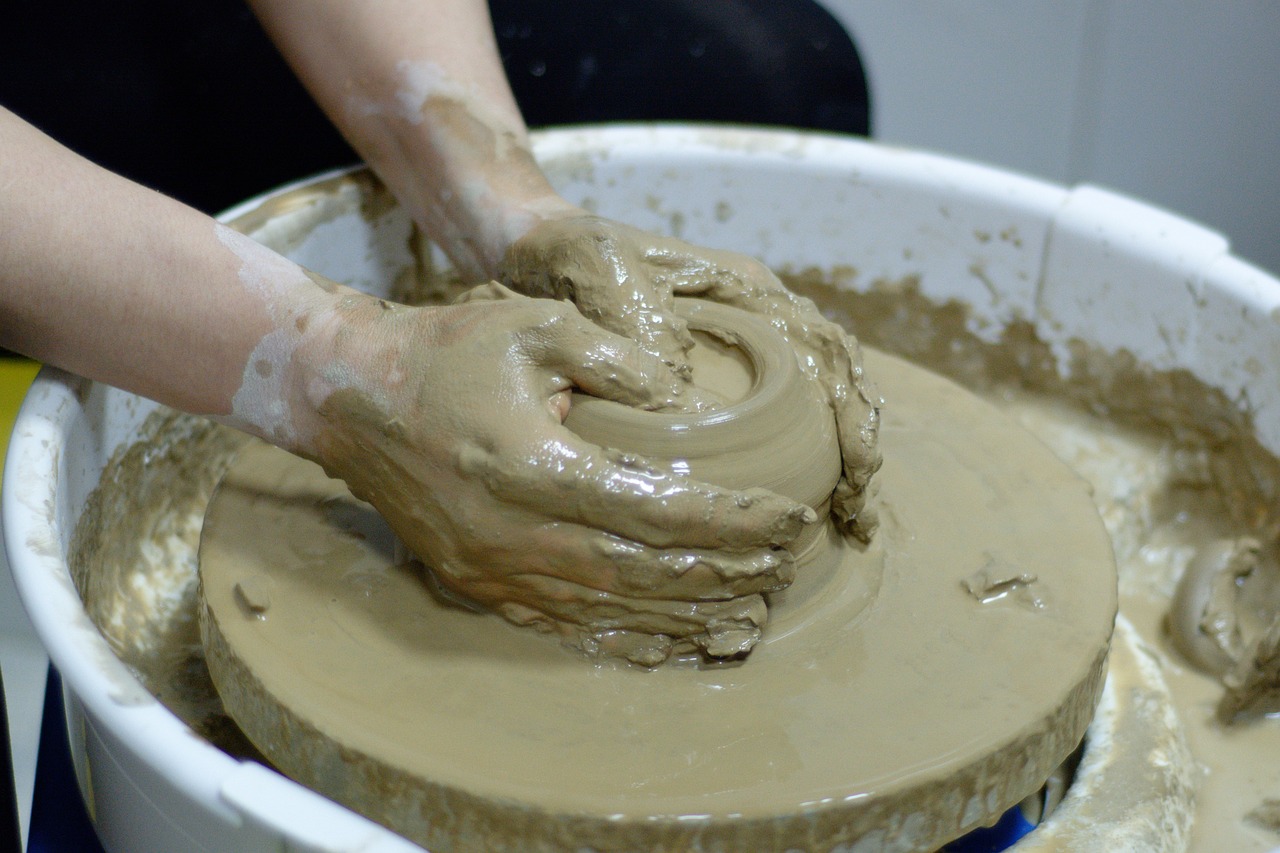
Storage Solutions
Efficient storage is crucial for any pottery studio, as it ensures that your workspace remains organized and functional. Imagine stepping into a studio where everything is in its place, tools are easily accessible, and materials are neatly arranged. This kind of environment not only boosts your productivity but also enhances your creativity. After all, who wants to dig through a chaotic mess when inspiration strikes? By implementing effective storage solutions, you can create a serene space that encourages you to dive into your pottery projects without distraction.
One of the first steps to achieving an organized studio is to categorize your tools and materials. Consider using clear bins or labeled boxes for different items. For example, you might have separate containers for your handbuilding tools, wheel-throwing tools, and glazes. This way, you can quickly find what you need without wasting precious time. Additionally, using shelves can dramatically increase your storage capacity. Floating shelves or wall-mounted racks can hold your tools, clay, and finished pieces without taking up valuable floor space.
| Storage Solution | Description |
|---|---|
| Clear Bins | Allows you to see contents easily, making it easier to find what you need. |
| Floating Shelves | Utilizes vertical space, keeping your studio tidy and organized. |
| Labeling | Helps identify contents quickly, reducing time spent searching for materials. |
Another key aspect of storage is maintaining the quality of your materials. Proper storage for clay and glazes is essential to keep them fresh and usable. Clay should be kept in airtight containers to prevent it from drying out. If you’re working with multiple types of clay, consider using a dedicated storage system that allows you to easily access different varieties. For glazes, ensure they are stored in a cool, dry place, and always seal them tightly after use to avoid contamination. Remember, a little extra care in storing your materials can go a long way in preserving their quality.
Finally, let’s not forget about the importance of a dedicated area for your finished pieces. Having a display shelf or a designated space for your completed works not only keeps them safe but also allows you to appreciate your progress. It can serve as a source of motivation, reminding you of your artistic journey. You might even want to rotate your displayed pieces regularly to keep the space feeling fresh and inspiring.
In conclusion, creating an organized pottery studio involves thoughtful planning and the right storage solutions. Whether you’re a beginner or a seasoned potter, investing time in organizing your tools and materials will undoubtedly enhance your creative experience. So, take a moment to assess your current setup and consider how you can implement these storage strategies to make your pottery studio a haven of creativity!
- What are the best materials for storage in a pottery studio? Clear bins, shelves, and airtight containers are excellent for organizing tools and materials.
- How can I keep my clay fresh? Store clay in airtight containers to prevent it from drying out.
- What should I do with finished pottery pieces? Designate a display area to showcase your completed works and keep them safe.

Tool Organization
When it comes to pottery, having your tools organized can make a world of difference. Imagine stepping into your studio and everything you need is right at your fingertips. No more rummaging through cluttered drawers or searching for that elusive wire cutter! Proper not only boosts your productivity but also enhances your creative flow. So, how can you achieve this zen-like state in your pottery workspace?
First off, consider using a tool wall or pegboard. This method allows you to hang your tools visibly, making them easy to access while also freeing up valuable table space. You can categorize your tools by type or frequency of use, ensuring that your most essential items are always within reach. For example, keep your handbuilding tools on one section and wheel-throwing tools on another. This way, you can quickly grab what you need without interrupting your creative process.
Another effective strategy is to invest in storage bins or containers. Clear plastic bins are fantastic for keeping your smaller tools organized. Label each bin to avoid confusion—this simple act can save you precious time during those intense creative sessions. For larger items like rolling pins or molds, consider using a dedicated shelf or cabinet. Not only does this keep your studio tidy, but it also protects your tools from damage.
To illustrate, here’s a simple table showing different storage solutions for your pottery tools:
| Storage Solution | Benefits |
|---|---|
| Tool Wall | Easy access, saves space, visually appealing |
| Clear Bins | Organized, labeled, protects smaller tools |
| Shelves/Cabinets | Protects larger tools, keeps studio tidy |
Lastly, don't underestimate the power of a good cleaning routine. Regularly cleaning and reorganizing your tools can prevent clutter from building up and becoming overwhelming. Set aside a little time each week to tidy up your workspace. You’ll be amazed at how much more inspired you feel in a clean, organized environment. Remember, a well-organized studio is not just about functionality; it’s about creating a space that inspires you to unleash your creativity!
- What are the best materials for tool organization in a pottery studio? - Consider using pegboards, clear bins, and shelving units for effective tool organization.
- How often should I reorganize my pottery tools? - It's a good idea to reassess your organization every few months or whenever you feel clutter building up.
- Can I use everyday household items for tool storage? - Absolutely! Repurposed jars, boxes, and baskets can be great for organizing tools and materials.
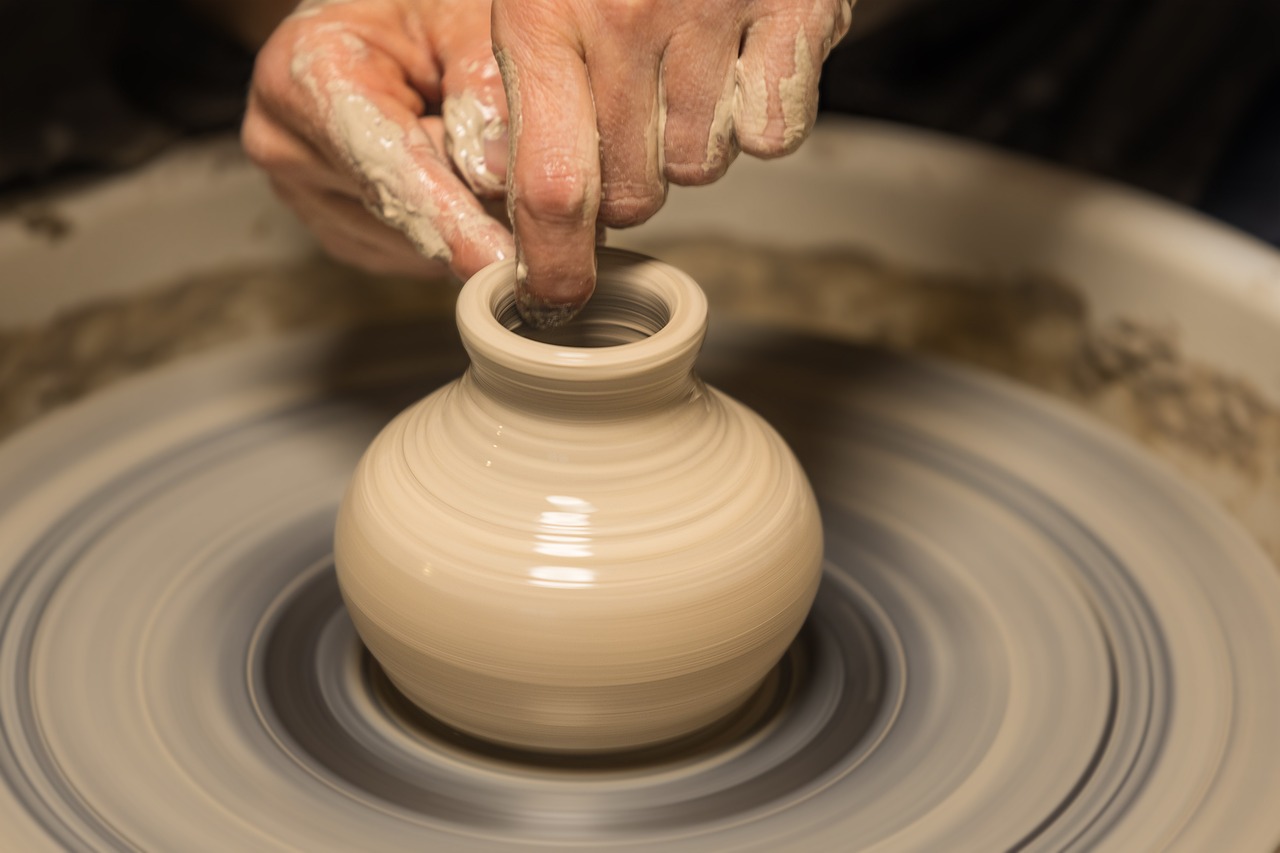
Clay and Glaze Storage
When it comes to pottery, proper storage of clay and glazes is essential for maintaining the quality and usability of these materials. Imagine walking into your studio and finding your clay fresh and ready to work with, or your glazes vibrant and intact. This can only happen with the right storage practices. First, let's talk about clay. Clay can dry out quickly if not stored correctly. To keep your clay in optimal condition, it’s best to wrap it tightly in plastic wrap or store it in airtight containers. This prevents exposure to air, which can lead to unwanted drying and cracking. Consider using a cool, dark place for storage, as heat and sunlight can also negatively affect the clay's texture and moisture levels.
Now, what about glazes? Glazes are often susceptible to separation and settling, which can affect their application. To avoid this, make sure to store your glazes in sealed containers, preferably glass or plastic, that are not exposed to direct sunlight. A cool temperature is also crucial here, as high temperatures can alter the chemical composition of the glaze. It’s a good idea to regularly stir your glazes before use to ensure an even consistency. If you find that your glazes have thickened over time, you can add a small amount of water to restore their original texture.
Here’s a quick reference table to summarize the best practices for storing clay and glazes:
| Material | Storage Method | Temperature |
|---|---|---|
| Clay | Airtight containers or wrapped in plastic | Cool, dark place |
| Glazes | Sealed glass or plastic containers | Cool, away from sunlight |
Incorporating these storage tips into your pottery routine can save you time and frustration in the long run. Imagine opening a container to find your clay just as pliable as the day you bought it, or your glazes ready to create stunning finishes on your pieces. Proper storage isn't just about keeping your materials safe; it’s about enhancing your overall pottery experience. So, take a moment to assess your storage solutions and make adjustments as needed. Your future self will thank you!
- How do I know if my clay has dried out? If your clay feels hard and crumbly, it has likely dried out. You can try rehydrating it with water, but it may not return to its original state.
- Can I store my glazes in plastic containers? Yes, plastic containers are suitable for glaze storage as long as they are sealed tightly to prevent air exposure.
- What should I do if my glaze has separated? Stir the glaze thoroughly before use. If it’s too thick, you can add a small amount of water to achieve the desired consistency.
Frequently Asked Questions
- What are the essential tools needed for a pottery studio?
To create a functional pottery studio, you'll need a variety of essential tools. These include handbuilding tools like rolling pins and wire cutters, as well as wheel-throwing tools such as a potter's wheel, trimming tools, and ribs. Having the right tools can significantly enhance your pottery experience and help you achieve your artistic vision.
- How can I organize my pottery studio effectively?
Effective organization is key to a productive pottery studio. Consider using shelves, bins, and tool racks to keep your workspace tidy. Implementing a system for storing clay and glazes will also help maintain their quality. Labeling your storage can save time and make it easier to find what you need, allowing for a more enjoyable creative process.
- What color schemes work best for a pottery studio?
The right color scheme can greatly influence your creativity. Soft, calming colors like blues and greens can create a serene environment, while vibrant colors like yellows and reds can energize your space. Choose colors that resonate with you personally to create a motivating atmosphere that inspires your pottery-making.
- How should I display my finished pottery pieces?
Displaying your finished pottery can be both functional and artistic. Consider using shelves, wall-mounted displays, or even a dedicated corner in your studio to showcase your work. You can also rotate pieces regularly to keep the display fresh and inspiring, turning your studio into a gallery of your creativity.
- What storage solutions are best for clay and glazes?
Proper storage for clay and glazes is crucial to maintaining their quality. Store clay in airtight containers to prevent it from drying out, and keep glazes in sealed jars away from direct sunlight. Organizing these materials in a cool, dry place will ensure they remain usable for all your pottery projects.


















